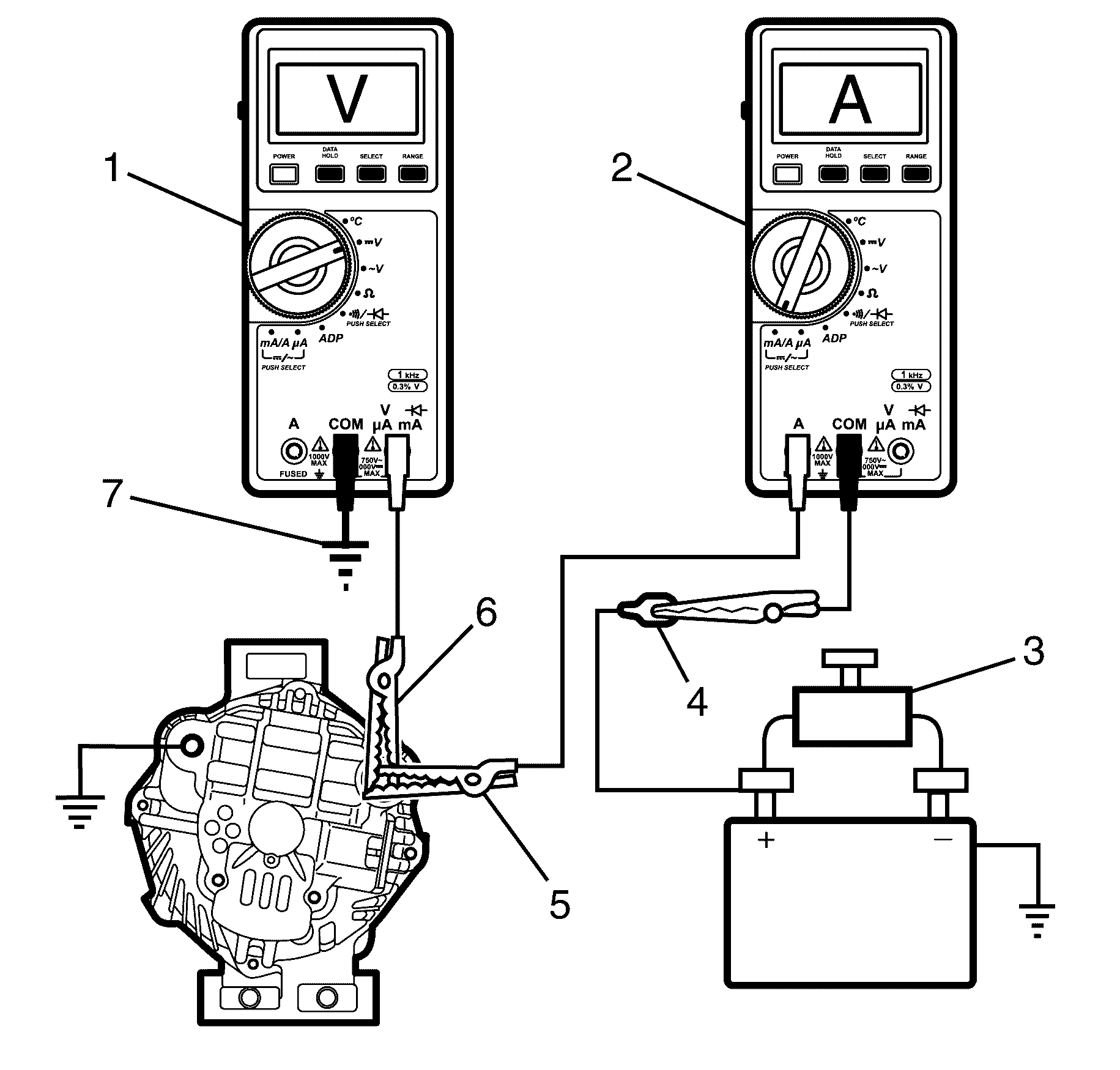For 1990-2009 cars only
Important: The battery must be fully charged and serviceable.
Electrical Information Reference
- Ignition OFF, disconnect the battery ground cable from the battery. Refer to Battery Negative Cable Disconnection and Connection.
- Disconnect the battery positive lead from the rear of the alternator.
- Connect a DMM (2) set on amps between the battery positive lead (4) and the alternator positive post (5).
- Connect a DMM (1) set on volts to the alternator positive terminal (6) and a known ground.
- Connect the negative battery cable to the battery Refer to Battery Negative Cable Disconnection and Connection.
- Record the voltage reading on the DMM (1). Connect a suitable loading device to the battery positive and negative posts (3).
- Connect a scan tool and start the engine.
- While observing the scan tool, increase the engine speed to 1300 RPM
- Observe the DMM (2), the amperage should be 5.0-10 amps and the DMM (1) voltage should read between 13.8-15.4 volts.
- While observing the scan tool, increase the engine speed to 1900 RPM.
- Observe the DMM (2) adjust the loading device to 90 percent of the alternators maximum output.
- Observe the DMM (1) voltage should read between 13.8-15.4 volts.
- Adjust the loading device until the DMM (1) reads 13.5 volts.
- Observe the DMM (2) the amperage should read maximum output of alternator.
- Stop the engine.
- Disconnect the battery ground cable from the battery. Refer to Battery Negative Cable Disconnection and Connection.
- Disconnect both DMM's
- Connect the positive lead to the rear of the alternator.
- Remove the loading device.
- Connect the battery negative cable to the battery. Refer to Battery Negative Cable Disconnection and Connection.
Caution: Refer to Safety Glasses Caution in the Preface section.

Important: Insulate the terminal on the battery positive lead to prevent contact with the vehicle.
